Bob Mayer's Blog, page 50
December 22, 2019
Which Came First? Chaos or Intelligence?
Draft opening of Earth Abides as I pick up the manuscript after being away for a few days house hunting. I’ve always found I have to start from the beginning whenever that happens. It gets me into the story. I view it like juggling: I have to pick up the characters, the plot, the theme, etc. and get them going until I get the rhythm of the book once more. And Earth Abides is turning out to be a very different kind of story with the most unusual antagonist I’ve had in eighty books:

In
The Beginning
In the beginning there was Chaos.
Or was there?
Did the universe all spring from nothingness and darkness, or was there an overarching intelligence behind it all? And if so, why would it bring forth Chaos? Or was the Chaos a natural result of a collapse of that first intelligence or perhaps a failure of the intelligence to advance? Or a test for intelligences that follow? If they could reach the same level?
Scale Life, at least what is currently accepted as ‘intelligent’ life in the Universe by the same intelligent life, doesn’t know how they came out of this Chaos. At first, as their consciousness emerges, each Scale in its little pocket of a single planet, tries to come up with an explanation for not only their own existence but that of the world around them. They look up and see the stars and also have to explain them. They look outside of themselves and invent, and worship, a higher power. An intelligence that created all; of course, they do so without any proof except their own existence and ego. That they exist out of Chaos.
Which could be both correct and wrong. If their existence came from some intelligence, then they are correct, but if that intelligence is testing them and doesn’t really care if they pass or fail, then are they wrong?
Does it matter?
December 18, 2019
The First Five Things To Do In An Emergency
Every situation is different and
this is a guideline. Always make sure your priority is safety for yourself
first, then others. You can’t help others if you don’t take care of yourself.
First: Do a First Aid triage of yourself. Breathing. Bleeding. Broken.
Are you stabilized?
Can you move?
Assess the
immediate situation. Take charge.
If in
immediate danger, get to a safe place. If you’re not in immediate danger, look
around.
What are
the priorities of threats? Other people will be panicking. Don’t get caught up
in that. Be aware that any situation can get worse. In fact, assume it will.
Also, having done your Area Study, you know there are after-effects of various
emergencies and natural disaster. Earthquakes around the coast can lead to
tsunamis. A terrorist attack could have a follow on attack for first
responders. A hurricane can lead to broken gas lines which lead to a fire
danger.
Check for
smoke, gases and fumes. Locate and shut off the source if possible. Fires,
earthquakes, bombs, etc. produce structural instability. Just because the roof
is still there, doesn’t mean it will stay there.
If in a
car accident, turn off ignition, look out for pools of gas or any smoke.
Second: Call for help. Dial 911. Yell. Blow a whistle. Tap on a pipe with a piece of metal. Whatever is appropriate to the event. If you’re performing CPR, yell at someone nearby to call for help. Tell them what to say.
Getting
trained personnel on the scene quickly is the best assistance you can render
others. If you talk to a dispatcher, give a succinct summary of the situation:
Location; what the emergency is; how many casualties and an estimate of
condition; any potential threats.
If it is a
mass casualty event, let them know that right away as the response will be
different as a single responding unit would be overwhelmed.
Third: Do a First Aid Triage of others. Triage comes from the French word ‘to sort’. The goal is to rapidly assess and prioritize a number of injured individuals and do the most good for the most people. The key here is it is not to do the best for every individual.
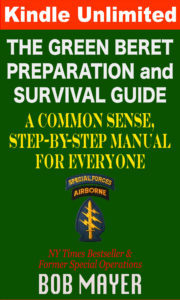
First,
make sure the injured are not in imminent danger.
How many
are injured? How badly?
Who can
assist you?
Can
assistance get to you?
Can the wounded by moved if they
have to be? Do you have the means to move them?
If immediate help is on the way,
don’t take any unnecessary risks. Don’t move an injured person unless they are
in immediate danger. Don’t treat past life-saving measures. Let the
professionals do their job when they arrive. Your job is to maintain until help
arrives.
What is the status of your A-Team? If some members aren’t present, where are they? Can you communicate with them and arrange to meet? If you can’t communicate with them, can you contact your out of area emergency contact? If that’s not possible the priority of meeting locations will be in order: home, IRP, ERP, BOHS.
All preparation checklists and links to free apps is free HERE.
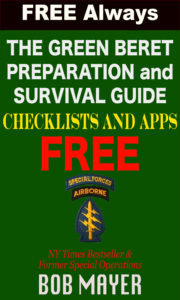
Fourth: Assess the environment. Can you stay or do you need to leave? Do you have adequate shelter where you are for the environment? If you’re staying, at home, at the IRP, ERP, work, school, wherever, inventory your supplies and gather what you can. Focus on water, communication, food and medical.
If leaving and you have time, dress
in your emergency clothing. Take your Grab-n-Go bag (home, car or work/school).
If leaving, are you going to the IRP to meet A-Team? Or is it best to go direct
to the ERP?
If you’re leaving and not going to
any of those, what is your destination? Can you get hold of your out of area
emergency contact? Are they clear of the effect of the emergency or disaster?
The destination should be chosen by priority among shelter, water, food, and
medication.
Fifth: Once in a safe place, assess the overall situation and make long term plans.
Excerpted from The Green Beret Preparation and Survival Guide
December 17, 2019
The Ancient Enemy Has Arrived
Area 51: Invasion is free today, 12/17 and tomorrow 12/18.
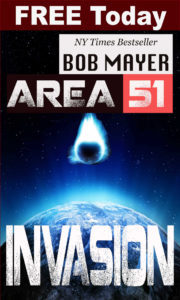
The Ancient Enemy has arrived.
A Swarm Battle Core is orbiting Earth preparing for the Reaping.
The remnants of mankind desperately try to either survive or fight back.
But
they aren’t certain what they’re going to face. All they have are myths
and legends. And when the Swarm actually does land, it’s worse than any
of those.
Major Mike Turcotte, the hero in defeating the Airlia,
makes a desperate attempt to stop the Swarm by going directly to the
Core. On Earth, the future of mankind hides in the Facility, an
underground self-contained ecosystem. And across the planet others
prepare for the last fight.
From an Assassin in New York City who
performs a heroic act of sacrifice, to the enigmatic Darlene in her
trailer in Marfa, Texas, to Nosferatu and Nekhbet, the last two Elder
undead hiding on an island in Puget Sound.
It appears there is no hope.
But there is always hope, but sometimes it takes a tremendous, unthinkable sacrifice.
“Action packed entertainment.” Kirkus Reviews.
December 16, 2019
Don’t Know What You Need To Be Prepared?
My review of the material available on being reasonably prepared for man-made and natural disasters uncovered a plethora of confusing and often contradictory information. It’s not because people are trying to deliberately be confusing, but rather because there are so many variables for every possible scenario.
That’s why one of the first things a person must do is an Area Study. But even before that, there are four items everyone should have: first aid kit, 2 cases of water per person in the household, an emergency radio and a survival manual that has first aid information in it.
I cover that here in a free slideshow on this page, where there a bunch.
Of course, I have The Green Beret Preparation and Survival Guide which will walk you through all the steps, including the Area Study and then give options on how well prepared you want to be, from a mild level to extreme. It allows you to focus on your greatest threats.

I’ve also put Appendix A : All checklists and links to gear and Appendix B: Free Apps on my web site where you can go and download both for free in either pdf; mobi (for Kindle) or epub for other ereaders.
Please avail yourself of this free information.
It can save you life and the lives of those you love.
At the very least, being prepared will give you peace of mind.
December 14, 2019
The US Naval Academy Was Founded Because of a Mutiny
And it wasn’t the Caine. I went to the Military Academy, founded by Thomas Jefferson in 1802. Although Jefferson tended to be anti-military, he accepted the need for a standing army. And if the nation was going to have one, he felt it should be officered by a cross-section of America, from every part of the country.

Interestingly, while I was at the Academy, little was made of Jefferson being the father of the Academy. There’s a big statue of George Washington in front of the mess hall, overlooking the Plain. We’ve got statues of Eisenhower and MacArthur flanking the barracks facing the Plain, which are named after the same.
But Jefferson? Not a big deal. Even among the loads of plebe ‘poop’ we had to memorize our first year, including such important information as “How’s the cow?”, we didn’t have to memorize that Jefferson founded the Academy.
That’s been rectified with the new Library being named after the author of the Declaration of Independence.
Back to the midshipmen, or squids in the vernacular. (Air Force Academy people are zoomies). I didn’t know why the Naval Academy was founded until I writing some historical novels about West Point, starting in the early 1840s and following cadets through the Mexican War and into the Civil War.
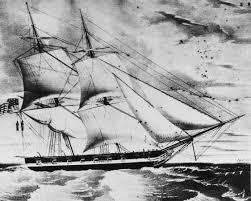
Turns out Annapolis was founded because prior to the Academy, midshipmen were trained on the job at sea. These young men, teenagers, served aboard a ship. In this case, the training ship was the USS Somers. Note in the image of the ship to the left there are some bodies hanging near the flag. I write in detail about what happened on the Somers in my Duty, Honor, Country series– the first book is permanently free on all ebook platforms, and the second is free today through the 16th of December– so I won’t go into detail here.
That’s called a teaser.
But really, it’s kind of simple. Put a bunch of, essentially, boys, on a ship, with little adult supervision and you have, well, the Naval Academy.
December 13, 2019
In honor of the Army-Navy game: Duty and Honor, FREE Today
Through 16 December HERE.
The first two books in my epic series, Duty, Honor, Country are free today. They’re followed, of course, by Country. And later in 2020, the 4th book of the series, Shiloh will be released.
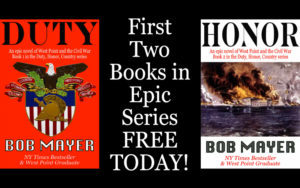
The Army-Navy game is tomorrow. Weird that after so many years I’m still conditioned to care. Four years of standing through every home game (and the team was NOT very good when I was there) is operant conditioning.
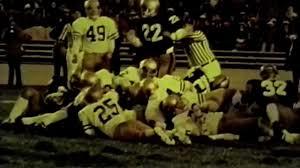
I remember standing in the 4th quarter of a 55-0 loss to Baylor– and I had to run a marathon the next day! We beat Navy my plebe year, which was good timing, but lost the next three. I went to one game after graduation when I was with 10th Special at Devens, with a bunch of guys from my team. The Green Berets made an impression on the cadets.
Before I wrote these books I wasn’t aware of why the Naval Academy was founded. It’s an intriguing chapter in history: a mutiny was the root cause. The story is included in Honor.

Cool Gus and Scout say “nothing but good times ahead!”
As long as they keep getting bones to chew on. The trouble starts when they tend to want each other’s bones about halfway through. It’s a dog thing.
December 9, 2019
Take a WALK ON THE WILD SIDE, today.
My 79th title, Walk on the Wild Side is out today. It’s the third book in the Will Kane, Green Beret series, that starts with New York Minute, which is free today only.

I’m already into Hell of a Town, the 4th book.
There will also be Area 51: Earth Abides later this year, a continuation of the 2 million plus selling Area 51 series.
It’s been thirty years since I got my first book deal. And as the Grateful Dead say: What a long strange trip its been. I’d like to think I’ve become a better writer, learning with each book. Certainly the reader feedback on the Will Kane, Green Beret series is extremely positive for which I’m grateful.
Will Kane is one of my favorite characters. He’s tough, but flawed. He can handle an ambush but not talking to a woman. He’s scarred, physically and psychologically, yet at his core he sees the fight between good and evil and knows that he has the skill set to do what few people can for good in defeating evil.
December 7, 2019
What Were The 7 Cascade Events Leading Up To Pearl Harbor?
Most disasters require 7 things to go wrong; my rule of 7. Whether it be a plane crash or a military disaster. Pearl Harbor was no different. It wasn’t one or two or even six things that went wrong: it was seven.
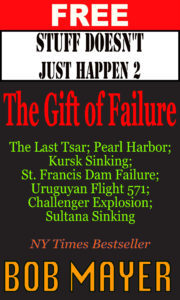
Free today through 9 December is Stuff Doesn’t Just Happen II: The Gift of Failure. Pearl Harbor is one of seven events I detail, showing how and why they occurred. By studying that, we can prevent future disasters, because a man-made error is always at least ONE, if not more of the Cascade Events.
Here briefly are the Cascade Events detailed for this event in the book:
Cascade One: Political misunderstanding and maneuvers that backfired.
Cascade Two: Military strategic planners in both countries seriously miscalculated each other.
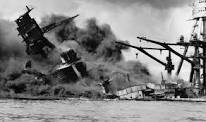
Cascade Three: Warnings were ignored and/or not given to those who needed to get the warnings.
Cascade Four: Tactical considerations worked both ways.
Cascade Five: New technology was not used correctly.
Cascade Six: Timing is everything.
Final Event: At 7:48 am on December 7th, 1941, the Japanese Empire conducted a surprise assault on the island of Oahu, primarily focused on the American Pacific Fleet in the harbor, with a secondary objective of destroying military aircraft at outlying bases.
December 5, 2019
Flight 19 Disappears on 5 Dec 1945
It began as nothing more than a routine training flight. At 2:10 p.m. on December 5, 1945, five TBM Avenger torpedo bombers took off from a Naval Air Station in Ft. Lauderdale, Florida. The planes—collectively known as “Flight 19”—were scheduled to tackle a three-hour exercise known as “Navigation Problem Number One.” Their triangular flight plan called for them to head east from the Florida coast and conduct bombing runs at a place called Hens and Chickens Shoals. They would then turn north and proceed over Grand Bahama Island before changing course a third time and flying southwest back to base.
Shortly after the patrol turned north for the second leg of its journey, something very strange happened. For reasons that are still unclear, Taylor became convinced that his Avenger’s compass was malfunctioning and that his planes had been flying in the wrong direction. The troubles only mounted after a front blew in and brought rain, gusting winds and heavy cloud cover. Flight 19 became hopelessly disoriented. “I don’t know where we are,” one of the pilots said over the radio. “We must have got lost after that last turn.”
The flight leader became convinced they were over the Gulf of Mexico rather than the Atlantic and ordered the flight to fly east, despite protests.
They were never seen again.
Even stranger, a PBM Mariner with 13 crewman took off that same evening to search for Flight 19 and disappeared 20 minutes into the flight and was never seen again. What happened?
Atlantis: An Ancient Mystery Coming Back to Threaten Our Modern World? from Bob Mayer
December 3, 2019
If You Are Able . . . (an epitaph on war)
This past week when my grandsons were visiting we went to the Worlds Fair Park here in Knoxville. Not far from the infamous Sunsphere, is the East Tennessee Veteran’s Memorial. It’s a solemn spot, as all such locations are. Each Medal of Honor awardee from East Tennessee has his own granite pillar and the names of all the fallen are listed on other pillars, grouped by wars.
There are a lot of names. I ended up having to discuss and explain things with my elder grandson that I found difficult to talk about with a seven year old.
Centered on one end is the pillar below with a poem I had never seen before from an Army Major written at Dak To on 1 January 1970. I write about two earlier battles at Dak To in 1967 where the 173rd Airborne was involved in New York Minute and Lawyers, Guns and Money, but by 1970 we were still fighting over the same hills that didn’t even have names, just numbers.
Major O’Donnell was KIA at Dak To on 24 March 1970, serving as a helicopter pilot.
Rarely have I seen the wishes of a veteran more aptly described than in this poem:




